Editor's Picks: Bag Of Tricks

art_of_sun / d1sk / Prostock-studio / Chinnapong / Shutterstock.com
A wallet, a phone and a set of keys—most consumers carry these items with them every day. When the pandemic hit, that list expanded to include a mask. These basic items are called everyday carry, or an EDC. According to website EverydayCarry.com, items on an EDC list are each thoughtfully chosen to serve a specific purpose. But when hands are full and pockets are stuffed, consumers need the essential for their essentials: a bag. According to PPAI’s 2017 Consumer Study, 50 percent of U.S. consumers own a promotional bag, generating more impressions than any other product in the U.S. Today’s bags are more than accessories; they are solutions for both end users and distributors.
People have always needed bags, first as a means of survival. According to the Victoria and Albert Museum in London, hunter-gatherer communities made makeshift pouches for carrying around essentials as early as 38,000 BC. Both men and women have benefitted from the power of the bag. Hieroglyphics show men in ancient Egypt toting bags around their waists. But for women, bags became a symbol of independence and security. In the 17th century, the development of “tie-on” pockets was a defining moment for women, providing an extremely popular detachable accessory for carrying possessions, similar to the function of handbags today. While European men's garments, starting in the Renaissance, had numerous pockets sewed into coats, jackets, waistcoats and breeches, women’s clothing did not. Tie-on pockets were large, highly practical options for mobile women, giving them both flexibility and convenience. Even when different types of bags and “male-style” pockets became available for women’s apparel, the tie-on pocket remained enduringly popular and consistent in its design.
While handbags have evolved into elaborate fashion statements, consumers are still looking for functionality first. In 2020, The Wall Street Journal wrote that in the COVID-19 era, purses are out and fanny packs are in. Hands-free and casual, the fanny pack offers the convenience and comfort that bulky, expensive handbags can’t. In recent years, backpacks and fanny/waist/chest packs have continued to stand out in the bag category for the function and ease they provide, according to the NPD Group. But just when the fashion “it” bag was declared a thing of the past, it made an unexpected comeback. According to Town & Country magazine, in November 2020, a rare Himalaya Kelly handbag sold for $437,000 at a Christie’s auction in Hong Kong—the highest price ever paid for a bag sold at auction. According to Business Wire, brands such as Hermes, Dior and Prada are also seeing a spike in resale demand, proving that well-crafted styles with traditional detailing can withstand the test of time.
With so many styles, functions and designs, distributors can include a bag in any promotion, campaign or event. “Totes and backpacks are a relatively inexpensive way for advertisers to get their message out to a wider audience and keep it there,” says Paul June, vice president of marketing for supplier Mobile Edge. “These products are high quality and enjoy broad appeal, so people tend to hold onto them and use them, which means your imprint gets seen by more people over a longer period of time.” According to industry research, bags with logos are kept for an average of 11 months, extending a client’s advertising investment.
But if distributors hope to get these products in end users’ hands, they’ll have to work within the industry-wide supply chain issues. Gary Semrow, vice president of supplier American Ad Bag, says, “Currently, the bags that have been the hardest to keep in stock during this supply-chain squeeze have been reusable grocery bags, coolers and wine bags. Most of the shortages are occurring because many large retail companies that often buy direct on their own have been experiencing the same delays with getting their containers delivered, just like promotional product suppliers are. This is causing the large retailers to come to promotional product distributors and buy up large quantities of these bags. My best advice to distributors is to contact the supplier and find out all size and color options currently in stock to have alternative ideas ready. Educate the end user and push them to make a fast decision because that inventory changes rapidly.” With one of the lowest costs per impression of any other promotional product in the U.S., bags are not only useful, but also cost-effective. Whether it’s a backpack or a high-quality tote bag, distributors can rely on bags to communicate a lasting and memorable message.
––––––––––––––––––––––––––––––––––––––––––––––––––––––––––––––––––––––––––

Reusable cotton tote bags were once the chic, eco-friendly alternative to plastic bags. But now, one type of these uber-popular carry-alls have reportedly created an unintended environmental concern of their own.
According to Yahoo! Finance, ever since British designer Anya Hindmarch popularized the reusable cotton bag with her “I’m Not A Plastic Bag” tote in 2007, consumers everywhere have been ditching single-use bags for the cotton tote. As consumers embraced the tote as a stylish, green solution, brands and major retailers caught onto the cotton wave, using these bags to show their commitment to reducing single-use plastics. Now a major branding tool, consumers can get a (sometimes free) cotton tote nearly anywhere, from their local coffee shop to major cosmetic companies. Since 2014, New Yorker magazine has gifted over two million iconic cream-and-black totes to subscribers, turning the bag into a status symbol. Although the pandemic briefly discouraged cotton totes, fearing that reusable bags could harbor the virus, these beloved bags are back.
However, while the bags appear to be an environmental solution, a potentially flawed 2018 study by the Ministry of Environment and Food of Denmark found that an organic cotton tote needs to be used 20,000 times to offset its overall impact of production. Some consider the study flawed because it only considers the effect on the ozone, not on water or air quality, climate or wildlife.
Cotton production is also extremely water-intensive and is sometimes linked to the forced labor of Uyghurs in Xinjiang, China, a region that produces 20 percent of the world’s cotton and supplies most Western fashion brands. Because they are often printed with PVC-based inks, cotton tote bags are not easily recycled. Only 15 percent of the 30 million tons of cotton produced every year actually makes its way to textile depositories and printed patterns must be cut out of the cloth, losing about 10 to 15 percent of the cotton.
Even so, when comparing cotton to plastic, cotton continues to have an environmental edge. While cotton uses pesticides (if not organically grown), lightweight plastic bags use greenhouse gas-emitting fossil fuels, will never biodegrade and can clog up the oceans when discarded. Conversely, quality cotton totes can be repurposed and passed along innumerable times, thus getting unlimited use from the bag and maximizing the number of brand impressions. Still, the global effort to replace single-use plastic bags with reusable cotton totes has redefined what “eco-friendly” means and proven that anything in excess is not good.
––––––––––––––––––––––––––––––––––––––––––––––––––––––––––––––––––––––––––

Chic and eco-friendly, this linen and cork tote is perfect for making an impression with its large, memorable imprint area. With a four-and-a-half-inch gusset and reinforced bottom, it can carry nearly anything. Made with six-ounce linen and a 100-percent cork bottom, it’s great for toting books, groceries, clothing and for use while running errands. The big 18-inch opening makes packing and unpacking easier, and the 18-inch handles fit easily over the shoulder.

HPG / PPAI 792175, S11 / www.hpgbrands.com
––––––––––––––––––––––––––––––––––––––––––––––––––––––––––––––––––––––––––
The versatile and environmentally friendly Charcoal Metro Duffel is perfectly sized for the gym, an overnight trip or a weekend getaway. It’s constructed of a rugged, lightweight charcoal cotton canvas with contrasting black vegan leather trim, and features a separate, zippered shoe/dry compartment to keep wet items away from the rest of your gear.
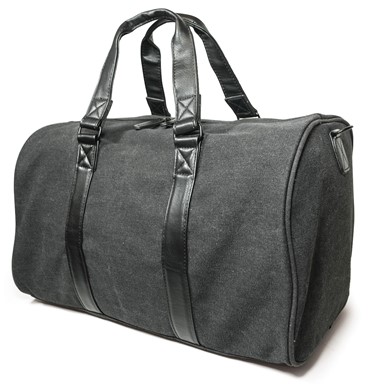
Mobile Edge / PPAI 314937, S1 / www.mobileedge.com
––––––––––––––––––––––––––––––––––––––––––––––––––––––––––––––––––––––––––
Perfect for day trips to the beach or lake, this canvas boat tote is a reliable go-to. Crafted of 16-ounce cotton, it has a double-striped body with a large main compartment and metal grommets secure the 24-inch soft cotton rope handles. Prop 65-compliant.
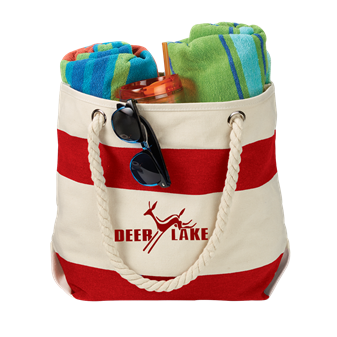
Evans Manufacturing / PPAI 110747, S10 / www.evans-mfg.com
––––––––––––––––––––––––––––––––––––––––––––––––––––––––––––––––––––––––––
The fanny pack is back. Perfect for carrying essentials at sporting events or festivals, this polyester fanny pack has an adjustable waist strap with a release clip. Recipients can store their valuables for safekeeping in one of two zippered compartments.
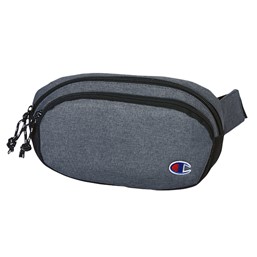
Kati Sportcap & Bag / PPAI 113758, S5 / www.katisportcap.com
––––––––––––––––––––––––––––––––––––––––––––––––––––––––––––––––––––––––––
The Florida Tote is a reusable shopping tote bag available in fun, bright colors, making any imprint stand out. Made of polyester, this tote features integrated double handles, and it can carry up to 15 pounds.
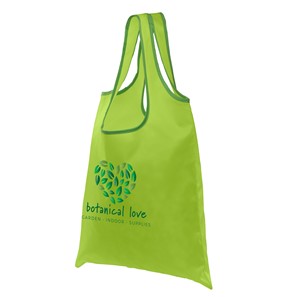
Goldstar / PPAI 114031, S10 / www.goldstarpens.com
––––––––––––––––––––––––––––––––––––––––––––––––––––––––––––––––––––––––––
Offering the convenience of a purse, travel bag, briefcase and book bag all in one, the Urban Laptop Tote is easy to carry and constructed from a lightweight, durable charcoal‐colored cotton canvas. The tote also features separate padded pockets for a laptop and tablet, and workstation storage for pens, a smartphone, flash drives and other accessories.
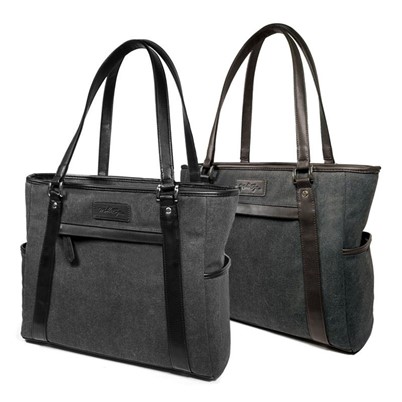
Mobile Edge / PPAI 314937, S1 / www.mobileedge.com
––––––––––––––––––––––––––––––––––––––––––––––––––––––––––––––––––––––––––
Use and easily store this foldaway tote bag. Made of polyester, it folds into a self-contained pouch using a string closure for convenient storage. With 18-inch handles, simply spot clean and air dry after a camping or beach trip. Prop 65-compliant.
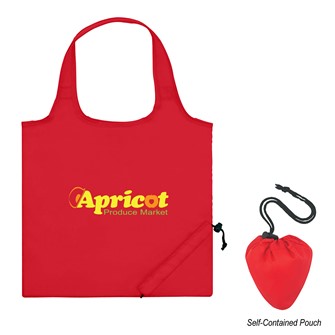
HPG / PPAI 792175, S11 / www.hpgbrands.com
––––––––––––––––––––––––––––––––––––––––––––––––––––––––––––––––––––––––––
Get through security checkpoints in a breeze at sporting events, parades, festivals, trade shows, concerts and other events with the Wrigley Stadium Tote Bag. Made of clear vinyl with vibrant trim and handles, it’s available in an assortment of colors. Prop 65-compliant.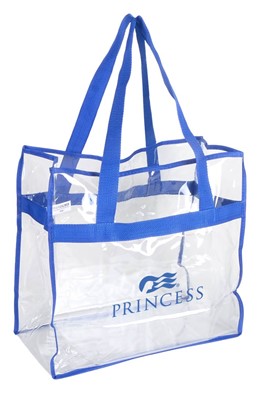
High Caliber Line / PPAI 205801, S10 / www.highcaliberline.com
––––––––––––––––––––––––––––––––––––––––––––––––––––––––––––––––––––––––––
Made with heavy polyester, this cargo organizer is perfect for hauling groceries and more. Expanding to 24 inches in length, this organizer with cooler bag features three equal compartments, and it folds flat and stays closed with a hook-and-loop closure. This organizer also includes an insulated cooler bag with reflective interior lining and zippered closure that slides perfectly into one section of the cargo organizer. Along with extra strong built-in handles, there is a solid pocket on one end and a mesh pocket on the other.
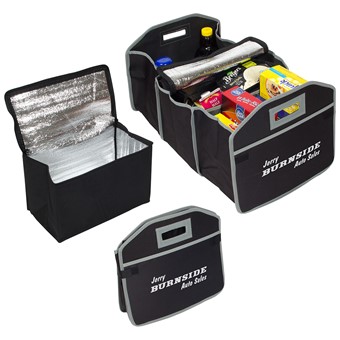
Ariel Premium Supply, Inc. / PPAI 161650, S10 / www.arielpremium.com
––––––––––––––––––––––––––––––––––––––––––––––––––––––––––––––––––––––––––
Made of durable, machine-washable fabric, the ChicoBag Vita Reusable Tote can handle whatever life throws at you—or drops in your bag. This reusable bag is made from 100-percent post-consumer recycled plastic bottle fabric. With a 40-pound carrying capacity, this bag can be carried over the shoulder for versatility and is able to haul everything from groceries and everyday essentials to a week’s worth of conference swag. When not in use, the bag folds into the attached pouch with a carabiner for easy storage.
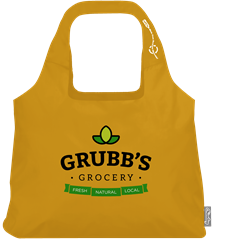
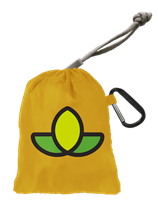
ChicoBag Company / PPAI 440893, S3 / www.chicobag.com
––––––––––––––––––––––––––––––––––––––––––––––––––––––––––––––––––––––––––
Kristina Valdez is associate editor of PPB.

